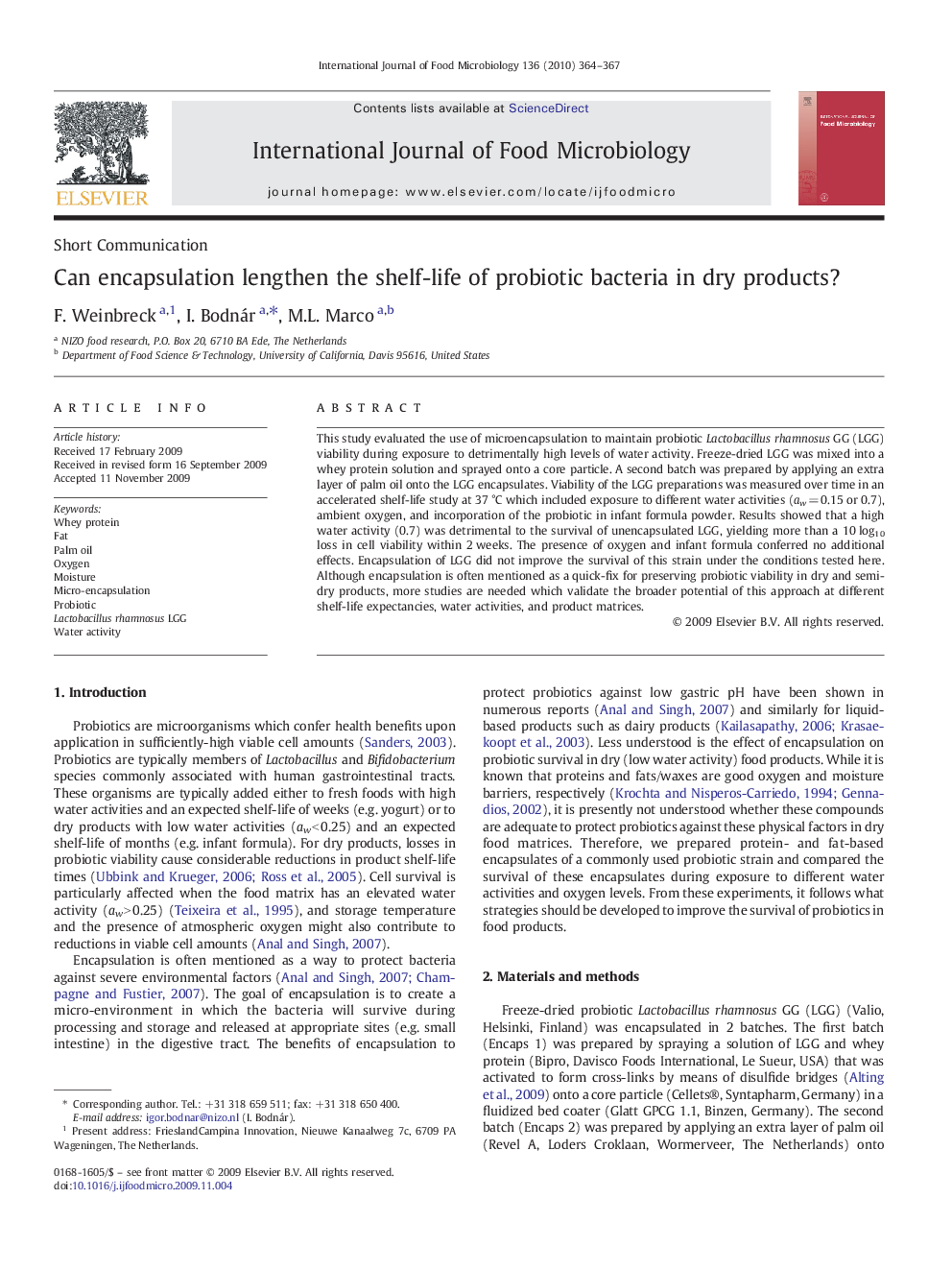| Article ID | Journal | Published Year | Pages | File Type |
|---|---|---|---|---|
| 4368430 | International Journal of Food Microbiology | 2010 | 4 Pages |
This study evaluated the use of microencapsulation to maintain probiotic Lactobacillus rhamnosus GG (LGG) viability during exposure to detrimentally high levels of water activity. Freeze-dried LGG was mixed into a whey protein solution and sprayed onto a core particle. A second batch was prepared by applying an extra layer of palm oil onto the LGG encapsulates. Viability of the LGG preparations was measured over time in an accelerated shelf-life study at 37 °C which included exposure to different water activities (aw = 0.15 or 0.7), ambient oxygen, and incorporation of the probiotic in infant formula powder. Results showed that a high water activity (0.7) was detrimental to the survival of unencapsulated LGG, yielding more than a 10 log10 loss in cell viability within 2 weeks. The presence of oxygen and infant formula conferred no additional effects. Encapsulation of LGG did not improve the survival of this strain under the conditions tested here. Although encapsulation is often mentioned as a quick-fix for preserving probiotic viability in dry and semi-dry products, more studies are needed which validate the broader potential of this approach at different shelf-life expectancies, water activities, and product matrices.
